
漢德百科全書 | 汉德百科全书
 Important port
Important port
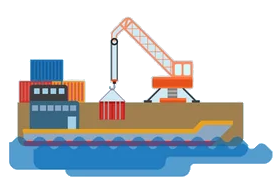

Durban [ˈdœːbən] (zulu eThekwini [ˈɛːʔtʰɛˌkwinĭ], früher Port Natal) ist eine Großstadt am Indischen Ozean an der Ostküste Südafrikas. Mit umliegenden Orten bildet sie die Metropolgemeinde eThekwini. Mit über 3,9 Millionen Einwohnern nach der Volkszählung von 2011 ist eThekwini die größte Stadt der Provinz KwaZulu-Natal und nach Johannesburg und Kapstadt die drittgrößte Stadt Südafrikas; Durban selbst hatte 595.061 Einwohner.[1]
Durban ist eine bedeutende Industrie- und Hafenstadt mit dem größten Hafen Afrikas und aufgrund der Strände und des subtropischen Klimas ein vielbesuchtes Urlaubszentrum des Landes.
德班是南非夸祖卢-纳塔尔省的一个城市,也是南非第二大城市,祖鲁语称为eThekwini,意思是“在海港”。拥有300万人,被称作“非洲最佳管理城市”,也是著名的国际会议之都。德班是非洲最繁忙的港口,也是通往非洲大陆和印度洋其他国家的大门。这里有四季如春的气候,迷人的海滩和可以观赏印度洋壮观景象的海边五星级宾馆。
德班不仅是南非的运动场,而且是国际性会议和非洲重要会议的理想举办地。国际会议中心在世界上具有很强的竞争实力, 曾举办过一系列重要会议,包括:南非经济首脑会议、不结盟运动部长级会议、2002年非洲会议、第十三届国际艾滋病会议和反对种族歧视国际会议。2002 年7月在这里召开的非洲联盟首脑会议上成立了非洲联盟。2011年11月在这里举行联合国气候大会。
德班(英语:Durban,南非语:Durban)是南非夸祖鲁-纳塔尔省最大的一座城市,祖鲁语称之为“eThekwini(特克维尼)”,“itheku”在祖鲁语中意为“海港或潟湖”,而“eThekwini”的叫法即是由此而来。德班都市圈在“南非人口最稠密都市圈”上排名第3,仅次于约翰内斯堡和开普敦。它同时也是南非仅次于约翰内斯堡的制造业中心。德班组成了德班都市圈的一部分,且以南非最繁忙的港口闻名。它也因温暖的亚热带气候和扩张的海滩被认为是热门的旅游城市之一。这座城市连同它周围的诸多小镇拥有将近370万的人口,这使其成为了印度洋海岸线的非洲部分上最大的城市。德班在夸祖鲁-纳塔尔省是人口最多的城市,而后者则是南非人口第2多的省。这座城市拥有南非最高的百万富翁人数增长。
 Dubai
Dubai

 Financial
Financial
 ***Global Financial Center
***Global Financial Center

 History
History
 N 2000 - 2100 AD
N 2000 - 2100 AD
 Silk road
Silk road
 United Arab Emirates
United Arab Emirates

 Important port
Important port

Geschichte
Die Anfänge der Besiedlung auf der arabischen Halbinsel reichen bis in die Steinzeit zurück. Das belegen Funde, die auf ein Alter von bis zu 7000 Jahren datiert wurden. Anfang des 20. Jahrhunderts war Dubai eine Hochburg des Perlenhandels und wurde 1904 zum Freihafen erklärt. Die Stadt avancierte zum wichtigsten Hafen der Golfküste. Die Schiffslinien und der Seehandel öffneten Dubai das Tor zur Welt, denn Bombay war ebenso gut zu erreichen wie Kairo, das damalige kulturelle und religiöse Zentrum der Golfregion. Der große Reichtum kam mit den ersten Ölfunden in den 30er Jahren über das Scheichtum. 1958 eröffnete dann auch der erste moderne Flughafen in Dubai. Im Jahre 1971 erklärten die sieben Emirate der heutigen V.A.E ihre Unabhängigkeit von der damaligen Schutzmacht Großbritannien. Heute präsentiert sich das Emirat Dubai als glitzernde Metropole, als Handels- und Tourismuszentrum, das trotz aller Zugeständnisse an die westliche Welt seine Traditionen bewahrt hat.(Quelle:http://www.dubai.de/4-Land-Leute.html)

East London (englisch; Afrikaans: Oos-Londen, isiXhosa: Imonti) ist eine 267.007 Einwohner (Stand 2011)[1] zählende Stadt in der Metropolgemeinde Buffalo City, Distrikt Amathole, Provinz Ostkap in Südafrika. Sie liegt an den Mündungen des Buffalo- und des Nahoon Rivers in den Indischen Ozean.

 Financial
Financial
 ***Global Financial Center
***Global Financial Center

 History
History
 N 2000 - 2100 AD
N 2000 - 2100 AD

 History
History
 M 1500 - 2000 AD
M 1500 - 2000 AD

 International cities
International cities
 ***Global Urban Economic Competitiveness
***Global Urban Economic Competitiveness
 Japan
Japan
 Kantō
Kantō
 Olympic Summer Games
Olympic Summer Games
 1964 Summer Olympics
1964 Summer Olympics
 2020 Summer Olympics
2020 Summer Olympics
 Silk road
Silk road

 Important port
Important port

Tokio (auch Tokyo, japanisch 東京 Tōkyō  [to̞ːkjo̞ː]) ist eine Weltstadt[3] in der Kantō-Region im Osten der japanischen Hauptinsel Honshū. Mit 9.508.776 Einwohnern ist sie nicht nur die bevölkerungsreichste Metropole des Landes, sondern als Sitz der japanischen Regierung und des Tennō auch die Hauptstadt Japans. Sie umfasst die 23 Bezirke auf dem Gebiet der 1943 als Verwaltungseinheit abgeschafften Stadt Tokio und ist damit keine eigene Gebietskörperschaft mehr; stattdessen bilden die Bezirke zusammen mit den Städten und Gemeinden der westlich gelegenen Tama-Region und den südlichen Izu- und Ogasawara-Inseln die Präfektur Tokio. Diese bildet wiederum das Zentrum der Metropolregion Tokio-Yokohama, in der mehr als 37 Millionen Menschen leben (Stand 2014), was die Region zum größten Ballungsraum der Welt macht.
[to̞ːkjo̞ː]) ist eine Weltstadt[3] in der Kantō-Region im Osten der japanischen Hauptinsel Honshū. Mit 9.508.776 Einwohnern ist sie nicht nur die bevölkerungsreichste Metropole des Landes, sondern als Sitz der japanischen Regierung und des Tennō auch die Hauptstadt Japans. Sie umfasst die 23 Bezirke auf dem Gebiet der 1943 als Verwaltungseinheit abgeschafften Stadt Tokio und ist damit keine eigene Gebietskörperschaft mehr; stattdessen bilden die Bezirke zusammen mit den Städten und Gemeinden der westlich gelegenen Tama-Region und den südlichen Izu- und Ogasawara-Inseln die Präfektur Tokio. Diese bildet wiederum das Zentrum der Metropolregion Tokio-Yokohama, in der mehr als 37 Millionen Menschen leben (Stand 2014), was die Region zum größten Ballungsraum der Welt macht.
Die Stadtgeschichte beginnt im Jahr 1446, als Ōta Dōkan in einem Sumpfgebiet am Nordufer der heutigen Bucht von Tokio mit dem Bau der Burg Edo begann, umgeben von einigen Fischerdörfern. 1590 ging diese Burg an Tokugawa Ieyasu, der hier nach seinem Sieg in der Schlacht von Sekigahara sein neues Shōgunat und damit die Edo-Zeit begründete. Edo wurde neben Kyōto zum politischen und kulturellen Zentrum des Landes. Mit der Meiji-Restauration 1868 wurde das Shōgunat abgeschafft und der Sitz des Tennō nach Edo verlegt, die Burg wurde zum Kaiserpalast und Edo bekam seinen neuen Namen Tokio, der „Östliche Hauptstadt“ bedeutet. Von da an wuchs auch die Bevölkerung der Stadt, die bereits um 1910 mit rund zwei Millionen Einwohnern zu den größten der Welt zählte. Im Zweiten Weltkrieg war Tokio zahlreichen Luftangriffen durch die USA ausgesetzt, bei denen rund die Hälfte der Stadtfläche zerstört wurde. Nach dem Ende der amerikanischen Besatzungszeit folgte ein rasanter wirtschaftlicher Aufschwung, einhergehend mit einem erneuten Bevölkerungszuwachs.
Tokio ist heute das Industrie-, Handels-, Bildungs- und Kulturzentrum Japans mit zahlreichen Universitäten, Hochschulen, Forschungsinstituten, Theatern und Museen. Mit den Flughäfen Narita und Haneda und als Ausgangspunkt der meisten Shinkansen-Linien ist es auch das Verkehrszentrum des Landes. Der Finanzplatz Tokio ist nicht nur der größte Japans, sondern zählt neben London, New York und Hongkong auch zu den fünf größten der Welt. Zudem weist die Stadt ein hohes Preisniveau auf und lag in einer Studie 2014 auf Platz 9 der teuersten Städte weltweit.[4][5] Neben modernen Sehenswürdigkeiten wie dem Tokyo Tower oder Tokyo Skytree bietet sie auch historische Anlagen wie die Kaiserlichen Gärten in Chiyoda, den Ueno-Park oder den Asakusa-Kannon-Tempel. In den vergangenen Jahren wurde Tokio zu einem zunehmend beliebten Tourismusziel und befindet sich mit jährlich bis zu acht Millionen Besuchern aus dem Ausland unter den 20 meistbesuchten Städten.[6] In einer Rangliste der Städte nach ihrer Lebensqualität belegte Tokio im Jahre 2018 den 50. Platz unter 231 untersuchten Städten weltweit.[7]
东京(日语:東京/とうきょう Tōkyō)是位于日本关东地方的都市,狭义上指东京都、或东京都区部(即东京市区),亦可泛指东京都及周边卫星都市群相连而成的“首都圈”(东京都会区)。目前(2017年8月)东京都区部人口数达946万,首都圈的人口数则达3千6百万,是目前全球规模最大的都会区[1],亦为亚洲最重要的世界级城市。东京是传统上的全球四大世界级城市[2]之一,在2016年GDP达9472.7亿美元,超越纽约(9006.8亿)成为全球第一,同时全球城市指数排名中排名第三。
东京古称江户,自德川幕府时代以来开始成为日本主要都市之一,明治维新时期改为现名后,更发展为日本政治、经济、文化、交通等众多领域的枢纽中心。经过二战后的继续发展,东京不仅成为世界商业金融、流行文化与时尚重镇,亦为世界经济发展度与富裕程度最高的都市之一。此外,东京还有目前全球最复杂、最密集的城市轨道交通系统,其中单就计算东京的地铁系统管辖区段每日平均运量达880万人次,繁忙程度居全球地铁第三位(如含地铁直通运转路线、私铁通勤路线及JR东日本通勤路线,则每日平均运量位居世界城市轨道交通运输系统第一位)。
在正式的行政区划定义上,东京仅限于东京都,与道、府、县同为日本的一级行政区,辖区包含东京都区部、多摩地方与伊豆群岛、小笠原群岛等离岛;其中,东京都区部为日本中央政府所在地。东京都同时也囊括了日本最南端(冲之鸟礁)和最东端(南鸟岛)等地理极点,拥有日本各都道府县中最多的人口数,同时也是日本人口密度最高的都道府县。
東京(とうきょう、英: Tokyo)は、日本の関東平野中央部に位置し、東京湾に面する都市。日本の首都である[1][注 1]。現在、その域内には23特別区・26市・5町・8村の基礎自治体がある[2]。
日本における政治・経済・文化の中心である。政治面では、日本政府が本拠地としている。立法府である国会の議事堂、司法府の頂点である最高裁判所、行政府の長である内閣総理大臣の官邸、中央省庁街(「霞が関」)などは、いずれも東京の中心部である東京23区にある。経済面では、日本の株式上場企業の本社のほとんどが東京に集中し、(東京圏では)購買力平価(PPP)を基にしても東京都市圏のGDPは1兆5369億ドル(2014年)であり[3]、世界的な経済都市であり、大消費地でもある。文化面では、たとえば現在では(東京都内に)千数百におよぶ劇場・ホール・ライブハウス類があり[4]多数のアーティストたちが活動する場であり、ポップカルチャーなどの新しい文化の発信地でもあり、ミシュランガイドの星つきの飲食店の数は世界最多で[5]食文化が華開いている場所でもある。
東京には、日本国内からだけでなく近隣の様々な国や世界各国から外国人が観光に訪れるようになった他、東京に移住した外国人が移民街を形成している。関東大震災や東京大空襲で焼け野原となったが、戦後の発展により現在は世界最大級のメトロポリス・世界都市となっている。東京は明治期にも課題が山積みの都市であったが(#明治維新後の課題と都市政策を参照)、現在もさまざまな課題を抱えている都市である(#近年の東京が都市としてかかえる課題を参照)。 東京都(とうきょうと、英: Tokyo Metropolis)は、日本の首都[注 1]。関東地方に位置する広域地方公共団体(都道府県)のひとつ。都庁所在地は新宿区[注 2]。最大の都市は世田谷区[注 3]。 管轄する領域は東京都区部(東京23区)、多摩地域(26市[注 4]と西多摩郡3町1村)および東京都島嶼部(大島、三宅、八丈、小笠原)の4支庁(2町7村)からなっている。東京都区部(東京23区)は、一つの都市として「東京」とも呼ばれる。沖ノ鳥島、南鳥島を含む小笠原諸島を含むため、日本最南端および最東端に位置する都道府県でもある。都公認の「東京都」の英語表記はTokyo Metropolis(Tokyo Met.)。他には Tokyo Prefecture と Tokyo Metropolitan Prefecture がある。
Tokyo (東京 Tōkyō, /ˈtoʊkioʊ/;[7] Japanese: [toːkʲoː] ( listen)), officially Tokyo Metropolis (東京都 Tōkyō-to), is one of the 47 prefectures of Japan and has been the capital since 1869.[8][9] The Greater Tokyo Area is the most populous metropolitan area in the world.[10] It is the seat of the Emperor of Japan, the Japanese government and the National Diet. Tokyo is in the Kantō region on the southeastern side of the main island Honshu and includes the Izu Islands and Ogasawara Islands.[11] Tokyo was formerly named Edo when Shōgun Tokugawa Ieyasu made the city as his headquarters in 1603. It became the capital after Emperor Meiji moved his seat to the city from Kyoto in 1868; at that time Edo was renamed Tokyo. Tokyo Metropolis was formed in 1943 from the merger of the former Tokyo Prefecture (東京府 Tōkyō-fu) and the city of Tokyo (東京市 Tōkyō-shi).
listen)), officially Tokyo Metropolis (東京都 Tōkyō-to), is one of the 47 prefectures of Japan and has been the capital since 1869.[8][9] The Greater Tokyo Area is the most populous metropolitan area in the world.[10] It is the seat of the Emperor of Japan, the Japanese government and the National Diet. Tokyo is in the Kantō region on the southeastern side of the main island Honshu and includes the Izu Islands and Ogasawara Islands.[11] Tokyo was formerly named Edo when Shōgun Tokugawa Ieyasu made the city as his headquarters in 1603. It became the capital after Emperor Meiji moved his seat to the city from Kyoto in 1868; at that time Edo was renamed Tokyo. Tokyo Metropolis was formed in 1943 from the merger of the former Tokyo Prefecture (東京府 Tōkyō-fu) and the city of Tokyo (東京市 Tōkyō-shi).
Tokyo has 39 million residents, 50% more people than any other urban area, with a $2.5 trillion economy larger than that of any other city; if it were a country, Tokyo would be the 8th largest economy in the world. Tokyo is often referred to as a city, but is officially known and governed as a "metropolitan prefecture", which differs from and combines elements of a city and a prefecture, a characteristic unique to Tokyo. The Tokyo Metropolitan Government administers the 23 Special Wards of Tokyo (each governed as an individual city), which cover the area that was the city of Tokyo before it merged and became the metropolitan prefecture in 1943, the 30 municipalities in the western part of the prefecture, and the two outlying island chains. The population of the special wards is over 9 million people, with the total population of the prefecture exceeding 13 million. The prefecture is part of the world's most populous metropolitan area with upwards of 37.8 million people and the world's largest urban agglomeration economy. In 2011, the city hosted 51 of the Fortune Global 500 companies, the highest number of any city in the world at that time.[12] Tokyo ranked third (twice) in the International Financial Centres Development Index. The city is also home to various television networks such as Fuji TV, Tokyo MX, TV Tokyo, TV Asahi, Nippon Television, NHK and the Tokyo Broadcasting System.
Tokyo is ranked first in the Global Economic Power Index and third in the Global Cities Index. The city is considered an alpha+ world city – as listed by the GaWC's 2008 inventory[13] – and in 2014, Tokyo was ranked first in the "Best overall experience" category of TripAdvisor's World City Survey (the city also ranked first in the following categories: "helpfulness of locals", "nightlife", "shopping", "local public transportation" and "cleanliness of streets").[14] In 2015, Tokyo was ranked as the 11th most expensive city for expatriates, according to the Mercer consulting firm,[15] and also the world's 11th most expensive city, according to the Economist Intelligence Unit's cost-of-living survey.[16] In 2015, Tokyo was named the Most Liveable City in the world by the magazine Monocle.[17] The Michelin Guide has awarded Tokyo by far the most Michelin stars of any city in the world.[18][19] Tokyo was ranked first out of all sixty cities in the 2017 Safe Cities Index.[20] The QS Best Student Cities ranked Tokyo as the 3rd-best city in the world to be a university student in 2016[21] and 2nd in 2018.[22] Tokyo hosted the 1964 Summer Olympics, the 1979 G-7 summit, the 1986 G-7 summit, and the 1993 G-7 summit, and will host the 2019 Rugby World Cup, the 2020 Summer Olympics and the 2020 Summer Paralympics.
Tokyo (東京(とうきょう), Tōkyō?, littéralement « Capitale de l'est »), anciennement Edo (江戸(えど)?), officiellement la préfecture métropolitaine de Tokyo (東京都(とうきょうと), Tōkyō-to?), est la capitale actuelle du Japon. Elle est la plus peuplée des préfectures du Japon, avec plus de 13 831 421 habitants intra-muros en 2018 et 42 794 714 dans l'agglomération2, et forme l'aire urbaine la plus peuplée au monde. Située sur la côte est de l'île principale de l'archipel japonais, Honshū, Tokyo est l'une des quarante-sept préfectures du Japon. Principal centre politique de l'archipel depuis le XVIIe siècle, la ville accueille la plupart des institutions du pays : la résidence de l'empereur du Japon, du Premier ministre, le siège de la Diète (le parlement japonais), du Cabinet, les ministères qui le constituent ainsi que toutes les ambassades étrangères.
À l'origine, Tokyo était un petit village de pêcheurs nommé Edo (« l'estuaire »). Fortifié au XVe siècle, Edo devient la base militaire du shogun Tokugawa Ieyasu à la fin du XVIe siècle, puis la capitale de son gouvernement. Durant l’époque d'Edo (1603-1868), la ville se développe et devient l'une des plus peuplées au monde à la fin du XVIIIe siècle, avec une population de près d'un million d'habitants. Avec la restauration de l'Empire en 1868, elle est confortée dans son rôle de cœur politique du Japon : le château d'Edo devient la résidence de l'empereur Meiji (Kōkyo), et la ville acquiert son nom actuel par opposition à Kyoto, l'ancienne capitale. Elle est ravagée en 1923 par un séisme de magnitude 7,9 qui fait plus de 100 000 morts. Durant la Seconde Guerre mondiale, elle est détruite pour moitié par des bombardements aériens américains, mais est rapidement reconstruite. Dans la seconde moitié du XXe siècle, Tokyo devient une métropole de rang mondial grâce à un fort développement industriel — notamment dans l'électronique —, et voit sa population multipliée par dix en cinquante ans.
Principal centre économique et financier du Japon, Tokyo est l'une des principales places financières asiatiques et mondiales. Elle est la première ville mondiale en termes de produits urbains bruts. Le dynamique arrondissement de Shinjuku comporte de nombreux gratte-ciels, dont la mairie de la ville, et plusieurs grands magasins du Japon. Minato-ku accueille les sièges sociaux de nombreuses entreprises japonaises et étrangères, ainsi qu'une cinquantaine d'ambassades. Chiyoda concentre quant à lui les institutions politiques japonaises. Enfin, Shibuya est réputé être l'un des quartiers les plus animés de la ville, grâce à la présence de grands centres commerciaux comme le 109. Malgré la modernité de son architecture, dont témoigne la tour Tokyo Skytree, de nombreux sanctuaires shinto et temples bouddhistes ont été préservés ou reconstruits après les bombardements, comme le Sensō-ji, le sanctuaire Yasukuni, le Zōjō-ji ou les portes Hōzōmon.
Située au fond de la baie de Tokyo, la commune de Tokyo dispose d'un statut administratif particulier parmi les préfectures du Japon, la ville de Tokyo ayant été supprimée en tant qu'entité politique ou administrative en 1943. L'agglomération de Tokyo, qui s'étend bien au-delà des limites de la préfecture, s'étend sur une large frange de la baie de Tokyo ainsi que sur la région du Kantō. Elle constitue en outre un des pôles de la mégalopole japonaise, avec notamment Ōsaka et Nagoya. La préfecture a organisé les Jeux olympiques d'été de 1964, et les accueillera à nouveau en 2020.
Tokio (東京都 Tōkyō-to?, lit. ‘capital del este’; pronunciación japonesa:  [toːkʲoː] (?·i)) es la capital de facto6 de Japón, localizada en el centro-este de la isla de Honshu, concretamente en la región de Kanto. En conjunto forma una de las 47 prefecturas de Japón, aunque su denominación oficial es metrópolis o capital (都 -to). La ciudad es el centro de la política, economía, educación, comunicación y cultura popular del país. Cuenta también con la mayor concentración de sedes corporativas, instituciones financieras, universidades y colegios, museos, teatros, y establecimientos comerciales y de entretenimiento de todo Japón.
[toːkʲoː] (?·i)) es la capital de facto6 de Japón, localizada en el centro-este de la isla de Honshu, concretamente en la región de Kanto. En conjunto forma una de las 47 prefecturas de Japón, aunque su denominación oficial es metrópolis o capital (都 -to). La ciudad es el centro de la política, economía, educación, comunicación y cultura popular del país. Cuenta también con la mayor concentración de sedes corporativas, instituciones financieras, universidades y colegios, museos, teatros, y establecimientos comerciales y de entretenimiento de todo Japón.
Con una población que supera los 13 millones de habitantes, se subdivide en 23 barrios (区 -ku); 26 ciudades (市 -shi); un distrito (郡 -gun) subdividido en tres pueblos (町 -chō o -machi) y una villa (村 -son o -mura); y cuatro subprefecturas (支庁 -shichō) subdivididas en dos pueblos y siete villas, que representan a varias pequeñas islas al sur de Honshu que se extienden más allá de 1800 km de Shinjuku, capital de la metrópoli y sede de la gobernación. El centro de Tokio, con sus 23 barrios, ocupa un tercio de la metrópoli, con una población cercana a los 13,23 millones de habitantes; esta área es lo que se conoce internacionalmente como la ciudad de Tokio. En su área metropolitana viven más de 37 millones de habitantes, lo que la convierte en la mayor aglomeración urbana del mundo.
A pesar de que Tokyo es la romanización más común del nombre en japonés, el nombre de la ciudad es Tokio en español y otros idiomas —entre ellos el alemán y el neerlandés—. En inglés y otros idiomas se escribe Tokyo, aunque antiguamente también se escribía Tokio. En el pasado, la ciudad se denominaba como Tokei, Edo o Yedo. El gentilicio de Tokio es tokiota.
Tokio fue sede de los Juegos Olímpicos de 1964 y será sede de los Juegos Olímpicos de 2020.7
То́кио (яп. 東京 То:кё: (инф.), «Восточная столица»[4][5]) — столица Японии, её административный, финансовый, промышленный и политический центр. Крупнейшая городская экономика мира[6]. Расположен в юго-восточной части острова Хонсю, на равнине Канто в бухте Токийского залива Тихого океана.
Помимо столицы, Токио также является одной из сорока семи префектур страны. Площадь префектуры составляет 2188,67 км²[7], население — 13 742 906 человек (1 октября 2017)[8], плотность населения — 6279,11 чел./км². По состоянию на 1 мая 2020 года население Токио составляло 14 002 973 человека, что делает Токио префектурой с самым большим населением в Японии.[9] Большой Токио является городской территорией с самым большим населением в мире, с населением по состоянию на 2016 год в 38 140 000 человек.[2]
Токийский столичный округ — административная единица Японии, включающая в себя специальные районы Токио, область Тама и островные территории Токийского столичного округа (острова Идзу и Огасавара).
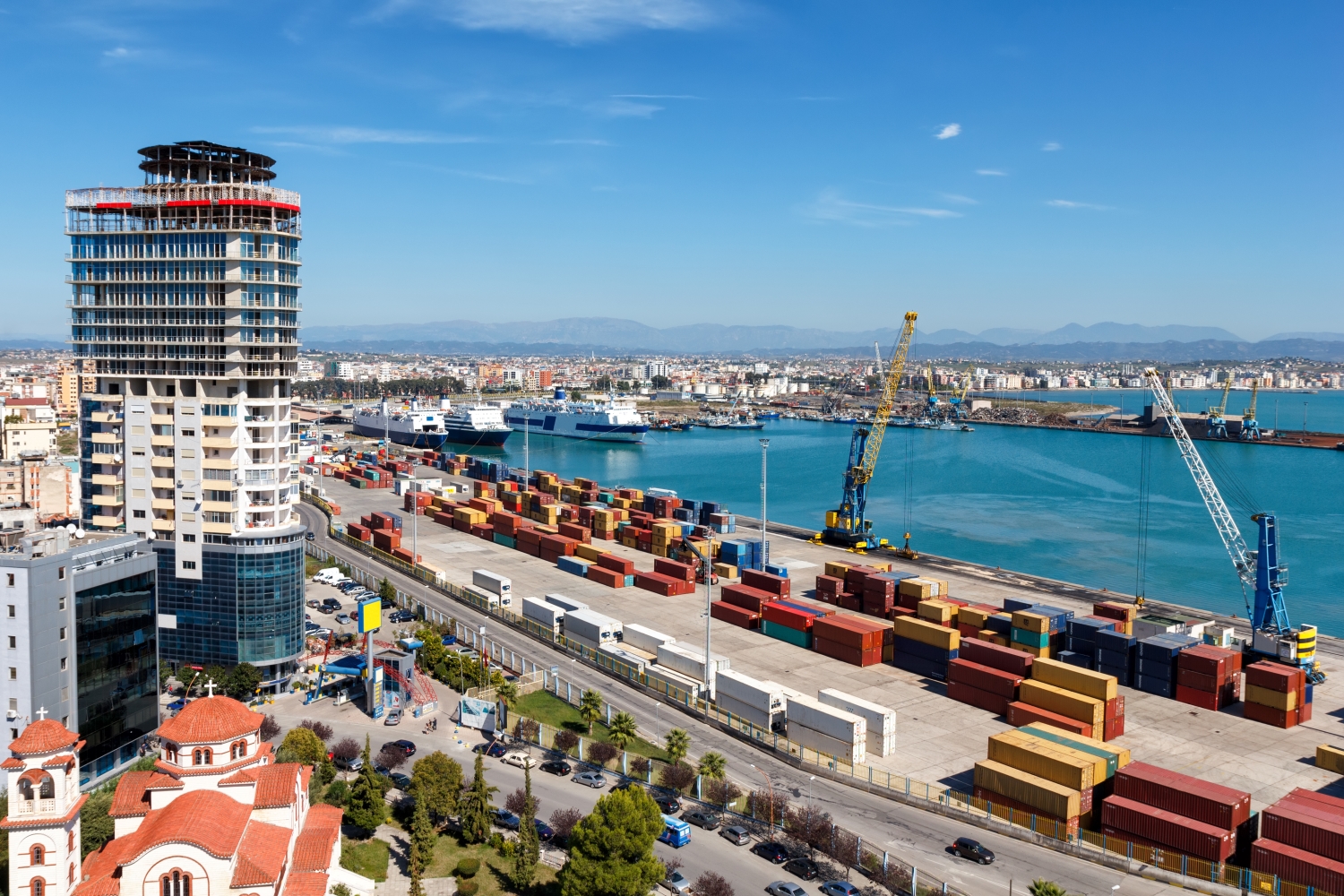
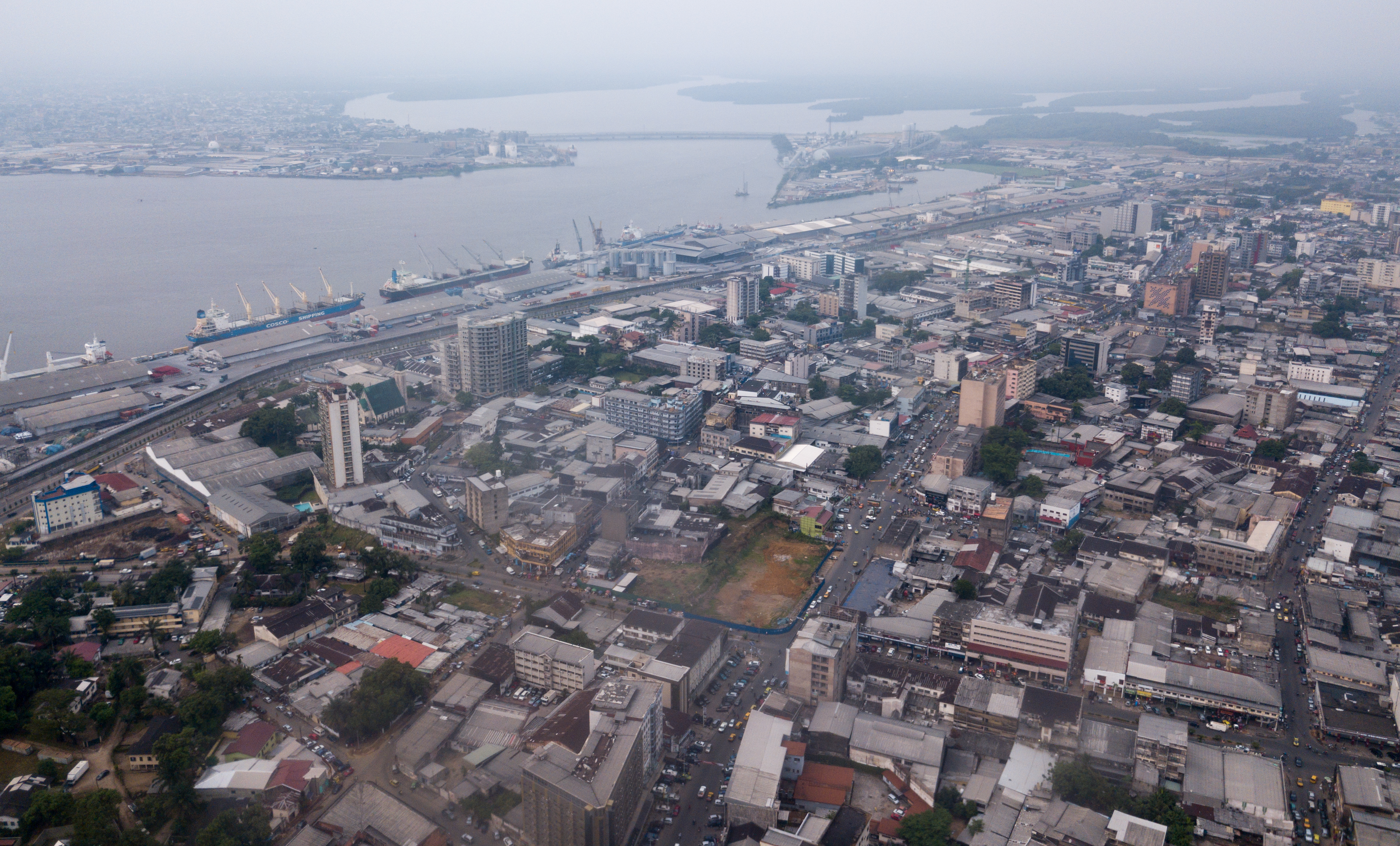
Douala (dt.: Duala) ist mit 1.907.479 Einwohnern (Stand 1. Januar 2005, tatsächlich ist eine größere Zahl anzunehmen) die größte Stadt Kameruns. Sie ist nach dem Volk der Duala benannt. Die ehemalige Hauptstadt (bis 1920; seitdem Yaoundé) bildet als Wirtschaftsmetropole das Finanz-, Industrie-, Handels- und Kulturzentrum sowie den Verkehrsknotenpunkt des westafrikanischen Staates. Douala ist die Hauptstadt der Region Littoral und Hauptort des Verwaltungsbezirks Wouri.

Duisburg (mit Dehnungs-i, /dyːsbʊʁk/, regional variabel [ˈdyːsbʊɐ̯ç] bis [ˈdʏːsbʊʀə̆ɕ]) ist eine kreisfreie Großstadt, die an der Mündung der Ruhr in den Rhein liegt. Die Stadt ist Teil der Metropolregion Rhein-Ruhr mit insgesamt rund zehn Millionen Einwohnern und gehört sowohl der Region Niederrhein als auch dem Ruhrgebiet an. Sie liegt im Regierungsbezirk Düsseldorf und ist mit circa einer halben Million Einwohnern nach Köln, Düsseldorf, Dortmund und Essen die fünftgrößte Stadt des Landes Nordrhein-Westfalen. Nach Angaben der Stadt schwankte die Einwohnerzahl in den letzten Jahren zwischen 498.000 und 503.000 Einwohnern. Das Oberzentrum nimmt auf der Liste der Großstädte in Deutschland den 15. Platz ein. Duisburg war 2010 als Teil des Ballungsraums Ruhrgebiet Kulturhauptstadt Europas.
Die am Ausgangspunkt des historischen Hellwegs gelegene und im Jahre 883 erstmals urkundlich genannte Stadt entwickelte sich bereits im Mittelalter zu einem urbanen Handelszentrum, verlor jedoch im 13. Jahrhundert aufgrund der Verlagerung des Rheins, die die Stadt vom Strom abschloss, erheblich an wirtschaftlicher und politischer Bedeutung. Im 19. Jahrhundert wuchs Duisburg dank seiner günstigen Flusslage mit den Häfen und der Nähe zu den Kohlelagerstätten im Ruhrgebiet auf der Basis der Eisen und Stahl erzeugenden Industrie zu einem bedeutenden Industriestandort. Städtebaulich ist Duisburg stark durch Industrieanlagen dieser Zeit geprägt, die heute teils noch genutzt und teils in Parkanlagen eingebunden sind, oder wie im Innenhafen durch Unternehmen und Kulturbetriebe genutzt werden. Die erste und dritte Themenroute der populären Route der Industriekultur mit zahlreichen Denkmälern führen durch das Duisburger Stadtgebiet, namentlich „Duisburg: Stadt und Hafen“ sowie „Duisburg: Industriekultur am Rhein“.
Der Hafen (betrieben durch die Duisburger Hafen AG) mit seinem Zentrum im Stadtteil Ruhrort gilt als größter Binnenhafen der Welt.[2] Er prägt die Wirtschaft der Stadt genauso wie die Eisen- und Stahlindustrie. Fast ein Drittel des in Deutschland erzeugten Roheisens stammt aus den acht[3] Duisburger Hochöfen.[4] Die traditionelle Stahlproduktion und Metallverarbeitung in Duisburg konzentriert sich zunehmend auf die Erzeugung von Hightech-Produkten. Durch diesen seit den 1970er Jahren anhaltenden Strukturwandel (Stahlkrise) leidet die Stadt unter einer hohen Arbeitslosigkeit.[5]
Zugleich ist die örtliche Logistik als eine der Drehscheiben Zentraleuropas ein wichtiges ökonomisches Standbein der Stadt. Zwischen Duisburg und der Volksrepublik China verkehren mit dem Trans-Eurasia-Express etwa 60 Züge wöchentlich. Duisburg ist ein bedeutender Knotenpunkt der „neuen chinesischen Seidenstraße“, verkehrsgünstig gelegen am Schnittpunkt vom Ruhrgebiet und Rheinschiene und im Kern des zentralen europäischen Wirtschaftsraumes.
德国西部鲁尔区重要工业城市。在鲁尔河注入莱茵河处。人口54.2万。中世纪为一商业城布,现 为全国最大河港,以吞吐煤、铁矿石、石油、建筑材料等为主。载重8,000吨的船队可上溯莱茵河至此。重要铁路枢纽。全国主要钢铁工业中心,全国7个具有 400万吨以上炼钢能力的钢铁厂中有5个在本市。其他工业有造船、炼焦、有色冶金、重型机械制造、炼油、化学、食品、纺织等部门。随着工矿业发展,都市范 围不断扩大,1908年并入北部的鲁尔奥特区,成为港口的重要部分之一,1929年又进一步向邻近地区扩展。有6座大桥横跨莱茵河,其中杜伊斯堡-新安坎 普大桥为世界最大拱型桁桥之一。
毗邻城市
杜伊斯堡市西面和北面与韦塞尔县的默尔斯市、莱茵贝格市和丁斯拉肯市,东面与奥伯豪森市和米尔海姆市,南面与梅特曼县的拉廷根市、杜塞尔多夫市、诺伊斯莱茵县的梅尔布施市和克雷费尔德市相邻。
名字起源
城市名的第一个音素可追溯到日耳曼语的“deus”,大概意为“潮湿的地区”或“浸水地”。“杜伊斯堡”因此意味着“浸水地中的城堡”。
名字的另外一个意义是从古德语“duis”,即小山(Hügel)演化过来的。因此“杜伊斯堡”可大概理解为“小山上的城堡”。 由此那个伫立在莱茵河边小丘上的,古时带着护城河、壁垒、栅栏的宫殿变成了如今的市政厅。
杜伊斯堡这个名字在欧洲并不唯一。比利时Tervuren东部的一片区域也叫做杜伊斯堡。 在荷兰的Gelderland郡有一个城市叫Doesburg。(Quelle: http://www.china001.com/)
杜伊斯堡(德语:Duisburg,德语:[ˈdyːsbʊʁk] ( 聆听))位于鲁尔区西部的下莱茵。它是杜塞尔多夫行政区里的一个非县辖城市,同时也是北莱茵-威斯特法伦州的第五大城市。
聆听))位于鲁尔区西部的下莱茵。它是杜塞尔多夫行政区里的一个非县辖城市,同时也是北莱茵-威斯特法伦州的第五大城市。
杜伊斯堡-鲁罗尔特港,其市中心坐落在鲁罗尔特区,是欧洲最大的内陆港。杜伊斯堡市内一所大学于2003年和临近的埃森大学重组为杜伊斯堡-埃森大学。 杜伊斯堡位于丘陵地带的边上,莱茵河的鲁尔河的汇合口。市区范围覆盖河流的两岸。城市的北部与旧Emsche和莱茵河上的小Emscher接壤。联邦州规划时决定把杜伊斯堡发展成区域中心。

敦刻尔克,又名灯却(法语:Dunkerque,[dœ̃kɛʁk];荷兰语:Duinkerke(n);德语:Dünkirchen)是法国上法兰西大区北部北部省的临海市镇,它原属北部-加来海峡大区,十公里之外便是法国与比利时边境。敦刻尔克是排在勒阿弗尔和马赛之后法国的第三大港口。[2]它也是一个工业城市,主要行业包括钢铁,食品加工,炼油,造船和化工。
1940年的二战期间,为了避免被德军围歼,英法盟军在这里执行了当时最大规模的撤退行动,史称敦刻尔克撤退。
Dunkerque [dœ̃kɛʀk] od. [dɛ̃kɛʀk] (deutsch: Dünkirchen; niederländisch: Duinkerke(n); englisch: Dunkirk; Französisch-Flämisch: Duunkerke) ist eine französische Hafenstadt an der südlichen Nordseeküste bzw. Kanalküste im Département Nord im historischen westflämischen Sprachgebiet Französisch-Flanderns. Die rund zehn Kilometer westlich der Grenze zu Belgien liegende und zugleich nördlichste Stadt Frankreichs zählt 86.279 Einwohner (Stand 1. Januar 2019), mit den Vorstädten sind es etwa 250.000. Sie lebt vom Hafen und von großen Industrieansiedlungen und beherbergt eine Universität mit ca. 10.000 Studenten.
Historische Bedeutung erlangte Dunkerque in der Zeit des Königs Ludwig XIV., dessen Festungsbaumeisters Sébastien Le Prestre de Vauban und des in dieser Stadt geborenen Korsaren Jean Bart. Mittlerweile erinnert der Ortsname an eine der wichtigsten Episoden des Zweiten Weltkrieges: 1940 wurden hier die British Expeditionary Force (Britisches Expeditionskorps, BEF) und Teile der geschlagenen französischen Armee in der Schlacht von Dünkirchen von den Deutschen eingekesselt.


Doha (arabisch الدوحة ad-Dauha, DMG ad-Dauḥa, im Dialekt ad-Dōha für „Die Bucht“) ist die Hauptstadt von Katar und liegt am Persischen Golf. Die Einwohnerzahl lag im April 2015 bei 587.055.[1] In der Agglomeration Dohas leben (Stand April 2015) 956.457 Menschen.[2] Doha wächst mit der nur neun Kilometer entfernten Stadt Ar-Rayyan schnell zusammen. Die Stadt beherbergt den Hamad International Airport, wichtige Teile der Öl- und Fischereiindustrie sowie mit der „Education City“ ein Gebiet für Forschung und Bildung.
多哈(阿拉伯语:الدوحة ad-Dūḥa)位于波斯湾畔的著名港口,是卡塔尔的首都,卡塔尔8个区之一。多哈是卡塔尔的第一大城市以及全国经济、交通和文化中心,2009年时,人口为998,651人,约占全国人口的60%。
第十五届亚洲运动会于2006年12月1日至15日在卡塔尔首都多哈进行,这可能是亚运会有史以来规模最大的一届。2011年12月,多哈举办第20届世界石油理事会,同年的12月,2011年泛阿拉伯运动会也于多哈举行。在2012年,多哈举办了第十八次联合国气候变化大会。在2022年,多哈将会举办2022年世界杯足球赛。
ドーハ(英語:Doha、アラビア語:الدوحة al-Dawha)は、カタールの首都。カタール半島東海岸のペルシア湾に面した港町で、同国最大の都市。また、同国を構成する基礎自治体のひとつである。中東有数の世界都市でもある。人口は1,312,947人(2013年)で、カタールの人口の60%がドーハ都市圏に住んでいる。
Doha (Arabic: الدوحة, ad-Dawḥa or ad-Dōḥa, pronounced [adˈdawħa]) is the capital and most populous city of the State of Qatar. Doha has a population of 1,351,000 in the city proper with the population close to 1.5 million.[1] The city is located on the coast of the Persian Gulf in the east of the country. It is Qatar's fastest growing city, with over 50% of the nation's population living in Doha or its surrounding suburbs, and it is also the economic centre of the country.
Doha was founded in the 1820s as an offshoot of Al Bidda. It was officially declared as the country's capital in 1971, when Qatar gained independence from being a British Protectorate.[2] As the commercial capital of Qatar and one of the emergent financial centres in the Middle East, Doha is considered a world city by the Globalization and World Cities Research Network. Doha accommodates Education City, an area devoted to research and education.
The city was host to the first ministerial-level meeting of the Doha Development Round of World Trade Organization negotiations. It was also selected as host city of a number of sporting events, including the 2006 Asian Games, the 2011 Pan Arab Games and most of the games at the 2011 AFC Asian Cup. In December 2011, the World Petroleum Council held the 20th World Petroleum Conference in Doha.[3] Additionally, the city hosted the 2012 UNFCCC Climate Negotiations and is set to host a large number of the venues for the 2022 FIFA World Cup.[4]
In May 2015, Doha was officially recognized as one of the New7Wonders Cities together with Vigan, La Paz, Durban, Havana, Beirut and Kuala Lumpur.[5]
Doha (en arabe : الدوحة, ad-Dawha ou ad-Doha, littéralement « le grand arbre » ou « l'arbre collant ») est la capitale du Qatar. Située sur le golfe Persique, avec une corniche de 7 km, elle a en avril 2010 une population de 796 947 habitants1. Doha est la plus grande ville du Qatar, abritant avec sa proche banlieue plus de 80 % de la population du pays. Elle est en croissance rapide et est maintenant juxtaposée à la ville d'Al Rayyan (455 623 hab. en avril 2010)1 située à 9 km à l'intérieur des terres. C'est également le centre économique du pays.
Doha est aussi le siège du gouvernement du Qatar, dirigé par le cheikh Hamad bin Khalifa Al Thani. Doha est le siège de l'Education City, espace consacré à la recherche et l'éducation.
Doha a été le site de la première réunion au niveau ministériel du cycle de Doha pour le développement des négociations de l'Organisation mondiale du commerce.
La ville de Doha a également accueilli les Jeux asiatiques de 2006, le sommet sur le changement climatique du 4 au 8 décembre 2012, la 38e session du Comité du patrimoine mondial de l'UNESCO du 15 au 25 juin 2014.
Doha abritera enfin plusieurs matches de la coupe du monde de football de 2022 organisée par le Qatar.
Doha (الدوحة in arabo, ad-Dawḥa oppure ad-Dōḥa, letteralmente il grande albero) è la capitale e la città più popolata dello stato del Qatar. Si trova sul Golfo Persico e aveva nel 2015 una popolazione di 956.460 abitanti. Doha è la più grande città del Qatar, il 60% della popolazione dello Stato risiede infatti nella città o nell'area suburbana.
A Doha vi è la sede del governo del Qatar, il cui capo è l'emiro Tamim bin Hamad Al Thani. Vicino a Doha sorge Education City, una zona in cui si sono insediati diversi campus universitari e istituti dedicati alla ricerca e all'innovazione.
La città presenta un carattere cosmopolita.[senza fonte] In Qatar è stanziato il principale quartier generale del Comando Centrale Militare USA, il più grande dell'intero medio-oriente.
Doha (en árabe, 'دوحة', Ad-Dawhah; trascripción: Doha, correspondiente a la pronunciación árabe dialectal) es la capital de Catar, país situado en una pequeña península en el golfo Pérsico. Su población estimada es de 1 903 447 habitantes (2012)1 y las principales actividades económicas son la industria del gas y el petróleo. Cerca de Doha se encuentra la Ciudad de la Educación, zona dedicada a la investigación y la educación.
Doha fue en 2001 la sede de la primera reunión a nivel ministerial de la Ronda de Doha, esto es, las negociaciones de la Organización Mundial de Comercio con el propósito de liberalizar el comercio mundial.
La ciudad cuenta con un aeropuerto, el Nuevo Aeropuerto Internacional de Doha.
En la ciudad se encuentra la sede de la cadena de televisión Al-Jazeera, uno de los principales medios de comunicación internacionales en lengua inglesa y árabe. En 2022, será sede de la Copa del Mundo de Fútbol en Catar. El Estadio Nacional de Lusail, el más grande de todos, será la sede de entre otros encuentros, del partido inaugural y la final.
La ciudad fue la sede de los Campeonatos Mundiales de Ciclismo en Ruta de 2016.2
До́ха (араб. الدوحة, Эд-Доха) — столица и крупнейший город арабского государства Катар, расположенный у побережья Персидского залива. Административный центр муниципалитета Эд-Доха.
В мае 2015 года Доха была официально избрана в качестве одного из «Семи новых чудо-городов», наряду с городами Бейрут, Виган, Дурбан, Гавана, Куала-Лумпур и Ла-Пас.



Toronto (englische Aussprache [təˈɹɒn(t)oʊ̯]; regional auch  [təˈɹɒnə] oder [ˈtɹɒnoʊ̯]) ist mit 2,6 Millionen Einwohnern[2] die größte Stadt Kanadas und die Hauptstadt der Provinz Ontario. Sie liegt im Golden Horseshoe (Goldenes Hufeisen), einer Region mit über 8,1 Millionen Einwohnern, die sich halbkreisförmig um das westliche Ende des Ontariosees bis zu den Niagarafällen erstreckt. Rund ein Drittel der Bevölkerungszunahme des ganzen Landes lebte in den letzten Jahren in diesem Großraum. Die Einwohnerzahl der Metropolregion (Census Metropolitan Area) stieg von 4,1 Millionen im Jahr 1992 auf 5,6 Millionen im Jahr 2011.[3] Die Greater Toronto Area hatte 2010 über 6,2 Millionen Einwohner.[4]
[təˈɹɒnə] oder [ˈtɹɒnoʊ̯]) ist mit 2,6 Millionen Einwohnern[2] die größte Stadt Kanadas und die Hauptstadt der Provinz Ontario. Sie liegt im Golden Horseshoe (Goldenes Hufeisen), einer Region mit über 8,1 Millionen Einwohnern, die sich halbkreisförmig um das westliche Ende des Ontariosees bis zu den Niagarafällen erstreckt. Rund ein Drittel der Bevölkerungszunahme des ganzen Landes lebte in den letzten Jahren in diesem Großraum. Die Einwohnerzahl der Metropolregion (Census Metropolitan Area) stieg von 4,1 Millionen im Jahr 1992 auf 5,6 Millionen im Jahr 2011.[3] Die Greater Toronto Area hatte 2010 über 6,2 Millionen Einwohner.[4]
Die Stadt liegt am nordwestlichen Ufer des Ontariosees, dem mit 18.960 km² Fläche[5] kleinsten der fünf Großen Seen. Durch die Eingemeindung einer Reihe von Vorstädten, die bereits mit Toronto verschmolzen waren (Etobicoke, Scarborough, York, East York und North York), wurde Toronto Ende der 1990er Jahre mehrfach vergrößert. Das Zentrum mit dem Einkaufs- und Bankendistrikt befindet sich in der Nähe des Sees. Die Haupteinkaufsstraße ist die Yonge Street. Toronto ist seit ungefähr den 1970er Jahren, nachdem Montreal über Jahrzehnte hinweg diese Rolle zugefallen war, Kanadas Wirtschaftszentrum und weltweit einer der führenden Finanzplätze.
多伦多(英语/法语:Toronto),是北美洲国家加拿大安大略省首府,加拿大的最大城市。
多伦多坐落在安大略湖西北岸的南安大略地区。根据2012年七月的加拿大人口普查,多伦市人口达2,790,060,为加拿大最大城市。多伦多市是大多伦多地区的心脏地区,也是安大略省南部人口稠密区(称作“金马蹄地区”)的一部分。[1][2][3]城市区有5,132,794名居民。[4]在2011年人口普查中,多伦多人口普查区有5,583,064名居民,而覆盖范围较广的大多伦多地区则有6,054,191名居民。[2]
作为加拿大的经济中心,多伦多是一个世界级城市,[5]也是世界上最大的金融中心之一。[6][7] 多伦多在经济上的领先地位在于金融、商业服务、电信、航太、交通运输、媒体、艺术、电影、电视制作、出版、软件、医药研究、教育、旅游、体育等产业。[8][9]多伦多证券交易所是世界第七大交易所,总部设于市内,有多数加拿大公司在这里上市。
多伦多的国际性人口[10] 体现出它是前往加拿大移民的重要落脚点。[11]而市内49%的人口是在加拿大以外诞生[12],也造就多伦多成为世上种族最多样化的城市之一。目前多伦多的低犯罪率、洁净的环境、高生活水准、以及对多样文化的包容性,令该市被多个经济学智囊团列为世界上最宜居的城市之一。[13][14]另一方面,多伦多于2006年被列为加拿大生活成本最高的城市。[15]
大约1/3的加拿大人居住在距多伦多两小时车程的郊区。加拿大大约1/6的就业机会在该市。
多伦多当地的华侨及华裔人口多达四十万,相当于加拿大全国约百分之一的人口,该城市也是加拿大华人最多的城市。除此之外也有大量世界各地的移民,加拿大安大略省多伦多市的人口统计资料使多伦多成为世界上最多元文化和多种族的城市之一。2016年,该市居民的51.5%属于明显的少数族裔,而2011年这一比例为49.1%,和1981年为13.6%。多伦多还建立了多个社区,例如唐人街,意大利的Corso,小意大利,小印度,希腊城,韩国城,小牙买加,小葡萄牙和朗塞瓦勒,以庆祝该市的多元文化主义的成功。
多伦多[注 1](英语:Toronto)是加拿大安大略省首府,也是加拿大最大的城市,坐落在安大略湖西北岸的南安大略地区。根据2021年的加拿大人口普查,多伦多市人口达2,794,356人,为加拿大最大城市。多伦多市是大多伦多地区的核心地区,也是安大略省南部人口稠密区(称作“金马蹄地区”)的一部分。[9][10][11]都会区有6,202,225名居民,[12]而覆盖范围较广的大多伦多地区则有9,765,188名居民。[10]作为加拿大的经济中心,多伦多是一个世界级城市,[13]也是世界上最大的金融中心之一。[14][15]多伦多在经济上的领先地位在于金融、商业服务、电信、航太、交通运输、媒体、艺术、电影、电视制作、出版、软件、医药研究、教育、旅游、体育等产业。[16][17]多伦多证券交易所是世界第七大交易所,总部设于市内,有多数加拿大公司在这里上市。
多伦多的国际性人口[18]体现出它是前往加拿大移民的重要落脚点。[19]而市内49%的人口是在加拿大以外诞生[20],也造就多伦多成为世上种族最多样化的城市之一。目前多伦多的低犯罪率、洁净的环境、高生活水准、以及对多样文化的包容性,令该市被多个经济学智囊团列为世界上最宜居的城市之一。[21][22]另一方面,多伦多于2006年被列为加拿大生活成本最高的城市。
トロント(英語: Toronto、標準音:[təˈɹɒntoʊ]、現地音:[ˈtɹɒnoʊ, təˈɹɒnoʊ])は、カナダのオンタリオ州の州都であり、同国最大の都市である。オンタリオ湖岸の北西に位置し、2016年の統計で人口273万人[1]。
国際影響力の強い世界都市であり、2016年の都市圏人口は624万人[2]。またヒューロン語で「集まる場所」という意味がある。
オンタリオ湖西岸を囲むゴールデン・ホースシュー(Golden Horseshoe)と呼ばれる都市化された地域の人口はおよそ924万人とされ、カナダ随一の金融センターとしてその中心を成している。1834年までの旧名はヨーク(Town of York)。
Toronto is the provincial capital of Ontario and the most populous city in Canada, with an estimated population of 2,956,024 (2018) and an estimated population of 6,341,935 in the Toronto Region (2018.)[14] Located on the shores of the western end of Lake Ontario, Toronto is also the anchor of the Golden Horseshoe, an urban agglomeration of 9,245,438 (2016)[15] that accounts for a significant portion of Canada's economic activity and more than 20% of Canada's population. Toronto is an international centre of business, finance, arts, and culture. Its large population of immigrants from around the globe has also made Toronto one of the most multicultural and cosmopolitan cities in the world.[16][17][18]
People have travelled through and inhabited the Toronto area, located on a broad sloping plateau interspersed with rivers, deep ravines, and urban forest, for more than 10,000 years.[19] After the broadly disputed Toronto Purchase, when the Mississauga surrendered the area to the British Crown,[20] the British established the town of York in 1793 and later designated it as the capital of Upper Canada.[21] During the War of 1812, the town was the site of the Battle of York and suffered heavy damage by American troops.[22] York was renamed and incorporated in 1834 as the city of Toronto. It was designated as the capital of the province of Ontario in 1867 during Canadian Confederation.[23] The city proper has since expanded past its original borders through both annexation and amalgamation to its current area of 630.2 km2 (243.3 sq mi).
The diverse population of Toronto reflects its current and historical role as an important destination for immigrants to Canada.[24][25] More than 50 percent of residents belong to a visible minority population group,[26] and over 200 distinct ethnic origins are represented among its inhabitants.[27] While the majority of Torontonians speak English as their primary language, over 160 languages are spoken in the city.[28]
Toronto is a prominent centre for music,[29] theatre,[30] motion picture production,[31] and television production,[32] and is home to the headquarters of Canada's major national broadcast networks and media outlets.[33] Its varied cultural institutions,[34] which include numerous museums and galleries, festivals and public events, entertainment districts, national historic sites, and sports activities,[35] attract over 43 million tourists each year.[36][37] Toronto is known for its many skyscrapers and high-rise buildings,[38] in particular the tallest free-standing structure in the Western Hemisphere, the CN Tower.[39]
The city is home to the Toronto Stock Exchange, the headquarters of Canada's five largest banks,[40] and the headquarters of many large Canadian and multinational corporations.[41] Its economy is highly diversified with strengths in technology, design, financial services, life sciences, education, arts, fashion, aerospace, environmental innovation, food services, and tourism.[42][43][44]
Toronto (/tɔ.ʁɔ̃.to/1 ; en anglais : /təˈɹɒntoʊ̯/2 Écouter voire localement /təˈɹɒnə/ ou /ˈtɹɒnoʊ̯/ Écouter) est la plus peuplée des villes du Canada et la capitale de la province de l'Ontario. Elle se situe dans le Sud-Est du Canada, sur la rive nord-ouest du lac Ontario. Selon le recensement de 2016, Toronto compte plus de 2,7 millions d'habitants, faisant d'elle la quatrième ville la plus peuplée en Amérique du Nord. Son aire métropolitaine compte 5,9 millions d'habitants, et la mégalopole du Golden Horseshoe, dont elle est le cœur, plus de 8,7 millions d'habitants en 2011, soit le quart de la population canadienne. Ville mondiale, Toronto est le centre bancaire, financier, commercial et artistique du Canada anglophone, et l'une des villes les plus multiculturelles et cosmopolites au monde.
La région de Toronto, située sur un vaste plateau en pente jalonné de rivières, de ravins et de forêts, est habitée depuis plus de 10 000 ans. Après la brève installation d'un fort par les Français puis l’achat contesté de la région au peuple Mississauga par la Couronne britannique, les colons anglais fondent en 1793 la ville d'York, qui devient la capitale du Haut-Canada. Pendant la guerre de 1812, la ville est le théâtre de la bataille d'York et subit de lourds dégâts par les troupes américaines. York est renommée Toronto en 1834. Elle est désignée capitale de la province de l'Ontario en 1867 par la Confédération canadienne. La ville s'est depuis étendue au-delà de ses frontières d'origine, à la suite de plusieurs fusions, jusqu'à atteindre la superficie actuelle de 630,2 km2.
La population particulièrement cosmopolite de Toronto reflète son rôle historique de destination des immigrants au Canada. Plus de 50 % des résidents appartiennent à un groupe de minorités visibles et plus de 200 origines ethniques distinctes sont représentées parmi ses habitants. Bien que la majorité des Torontois parlent l'anglais principalement, plus de 160 langues sont parlées dans la ville.
Toronto est devenu un important centre de musique, théâtre, de production cinématographique et télévisuelle. Elle abrite le siège des principaux réseaux de diffusion et des médias nationaux du Canada. Ses institutions culturelles variées, qui comprennent de nombreux musées et galeries d'art, des festivals et événements publics, des quartiers de divertissement, des lieux historiques nationaux et des activités sportives, attirent plus de 25 millions de touristes chaque année. Toronto est connue pour ses nombreux gratte-ciel, en particulier la plus haute structure autoportante de l' hémisphère occidental, la tour CN.
La ville abrite la Bourse de Toronto, le siège des cinq plus grandes banques du Canada et de nombreuses autres grandes sociétés canadiennes et multinationales, de tous les secteurs économiques. Elle abrite aussi de nombreux établissements d'enseignement supérieur réputés, dont l'université de Toronto qui figure parmi les plus réputées au monde.
Toronto apparaît régulièrement dans les classements des meilleures villes en termes de qualité de vie, malgré un coût de la vie important. Ses habitants s'appellent les Torontois.
Toronto (IPA: [təˈɹɒntoʊ̯]; pronuncia locale: [ˈtrɒnoʊ] oppure [təˈɹɒnə], ascolta[?·info]) è una città dell'estremo Sud-Est del Canada, capoluogo della provincia dell'Ontario e centro più popoloso del Canada con i suoi 3 120 668 abitanti[1] (5 928 040 nell'area metropolitana[2]).
Motore economico del Canada, Toronto è, assieme a Montréal, la città del paese nordamericano più conosciuta nel mondo, seguita da Ottawa. Caratteristica della città è quella di essere una delle più multiculturali nel mondo, con circa il 36% degli abitanti di origine non canadese. Per dare un'idea di ciò basti pensare che il 911 (numero telefonico di emergenza) di Toronto è attrezzato per rispondere in oltre 150 lingue[3]. La seconda più grande comunità, superata da qualche anno da quella cinese, è costituita dagli italiani che hanno dato un enorme contributo allo sviluppo di questo paese. Si stima che le persone di origine italiana residenti a Toronto siano superiori a 500 000. Il primo quartiere dove si insediarono gli italiani fu quello di College, successivamente si spostarono a Saint Clair denominata col nome aggiuntivo di Corso Italia[4] dal 1988.
Toronto è suddivisa in 240 quartieri all'interno dei suoi confini, raggruppati in sei distretti (Old Toronto, East York, Etobicoke, Scarborough, North York e York (dove si trova anche il quartiere di Weston). Nella parte centrale di Toronto (Downtown Toronto) c'è una città sotterranea, chiamata PATH (in inglese: il sentiero o il percorso), costituita da una rete di collegamenti che mettono in collegamento i grattacieli della città. Il percorso è lungo più di 30 km. Secondo il Guinness dei primati, con i suoi 371600 m² di estensione, il PATH è più esteso centro commerciale sotterraneo del mondo.[5]
I residenti considerano questi 27 km di strade sotterranee come parte della città stessa, come se la città iniziasse non dal suolo, ma dal piano -3. Venne creata agli inizi degli anni sessanta perché in inverno, spazzata da venti nordici, Toronto è molto fredda in rapporto alla latitudine, mentre sotto ci si può muovere in abiti primaverili, sulle strade superiori, durante straordinarie irruzioni gelide ci possono essere temperature di −25/−30 °C al primo mattino o di sera. Di notte si può scendere un po' più in basso ed in tali casi le massime rimangono spesso a -20 sotto lo zero. Ovviamente il traffico automobilistico convenzionale è bandito nella città sotterranea, gli spostamenti sono previsti a piedi o con mezzi per disabili, ma il path ha numerosi punti di contatto con la viabilità esterna (parcheggi) o, molto più frequentemente, con una fitta rete di stazioni del trasporto pubblico di superficie o sotterraneo (subway).
Per muoversi nella parte sotterranea è molto importante fare riferimento a elementi di identificazione degli incroci (come elementi architettonici, facciate di banche, negozi tipici, ecc.), dato che non sempre il percorso sotterraneo (pedonale) corrisponde a quello (stradale) di superficie; o meglio, se non si è pratici, bisogna usare la mappa. La città sotterranea è completamente attrezzata come una città comune: ci sono banche, uffici postali, locali pubblici, ristoranti, uffici e supermercati. Le maggiori istituzioni (stazioni ferroviarie, aziende pubbliche, aziende commerciali, ecc.) hanno accesso multiplo: di superficie e sotterraneo.
Toronto (pronunciación en inglés: /tʲəˈɹɑntʲoʊ/ (![]() escuchar), localmente /tʲəˈɹɑnoʊ/, /ˈtʲɹɑnoʊ/) es la capital de la provincia de Ontario3 y, con una población de 2 615 060 habs.4 es la ciudad más grande de Canadá,5 además del centro financiero de dicho país.
escuchar), localmente /tʲəˈɹɑnoʊ/, /ˈtʲɹɑnoʊ/) es la capital de la provincia de Ontario3 y, con una población de 2 615 060 habs.4 es la ciudad más grande de Canadá,5 además del centro financiero de dicho país.
Localizada en la orilla noroeste del lago Ontario,6 es la quinta ciudad más grande de Norteamérica.7 Toronto se encuentra en el corazón del Área Metropolitana de Toronto (Greater Toronto Area en inglés y abreviado como GTA), la mayor área metropolitana de Canadá, y es parte de una región densamente poblada en el centro-sur de Ontario conocida como Golden Horseshoe (Herradura Dorada), donde residen ocho millones de habitantes.8910
Al ser la capital económica de Canadá, Toronto es considerada una ciudad global y una de las principales ciudades financieras del mundo.11 Lidera los sectores económicos de finanzas, servicios empresariales, telecomunicaciones, transporte, medios de comunicación, arte, cine, investigación médica, educación, y turismo de Canadá.1213 El Toronto Stock Exchange es la mayor bolsa de valores del país y la séptima del mundo.12
Toronto es famosa por la Torre CN, con 553 metros de altura. La ciudad se considera el centro de la cultura canadiense anglófona y es la anfitriona de muchas celebraciones nacionales.
La población de Toronto es cosmopolita,1415 y es un importante destino para muchos inmigrantes a Canadá.16 Toronto es la mayor ciudad del mundo en porcentaje de residentes no nacidos en el propio país; sobre un 49 % de los habitantes de la ciudad no ha nacido en Canadá.141516 Debido al bajo índice de criminalidad,17 el cuidado medio ambiente y el alto nivel de vida, Toronto, es considerada con asiduidad una de las ciudades mejor habitables del mundo.1819 Además, en 2006 fue clasificada como la ciudad más cara de Canadá.20 Los nacidos en Toronto reciben el gentilicio de torontonianos.21
En enero de 2005, Toronto fue escogida por el gobierno canadiense como una de las capitales culturales de Canadá. Toronto posee una de las mejores calidades de vida de América del Norte, y es considerada por muchos como una de las mejores metrópolis del mundo para vivir.22 Es una de las ciudades más seguras de América —su tasa de criminalidad es menor que la de cualquier gran ciudad del continente, y una de las menores de Canadá.23
En la ciudad vecina de Mississauga está el Aeropuerto Internacional Toronto Pearson. Además, en 'las islas de Toronto' dentro de la ciudad está el Billy Bishop Toronto City Airport, que es más pequeño.
Торо́нто (англ. Toronto [təˈrɒntoʊ], местн. [təˈrɒnoʊ], [ˈtrɒnoʊ], [-nə]) — крупнейший город Канады, административный центр провинции Онтарио. Население — 2 731 571 чел. (2016); вместе с городами Миссиссога, Брамптон, Маркем и другими образует агломерацию Большой Торонто с населением 5928 тыс. жителей.
Торонто является частью «золотой подковы» — густонаселённого региона вокруг западной части озера Онтарио с населением около 7 млн человек. Приблизительно одна треть всего населения Канады живёт в радиусе 500 км от Торонто. Около шестой части всех рабочих мест Канады находятся в пределах городской черты.
Город Торонто известен также как «экономический двигатель» Канады, считается одним из ведущих мегаполисов мира и имеет большой вес как в регионе, так и на государственном и международном уровне. В ежегодном рейтинге Global Liveability Ranking журнала The Economist, оценивающем совокупное качество жизни, Торонто занимает четвёртое место в мире среди 140 городов — участников рейтинга[1].
В Торонто располагается главный офис Всемирного конгресса украинцев. В июне 2010 года в Торонто прошла встреча глав государств и правительств «Большой двадцатки».
К северо-востоку от Торонто в городе Пикеринг находится атомная электростанция АЭС Пикеринг с восемью ядерными реакторами.

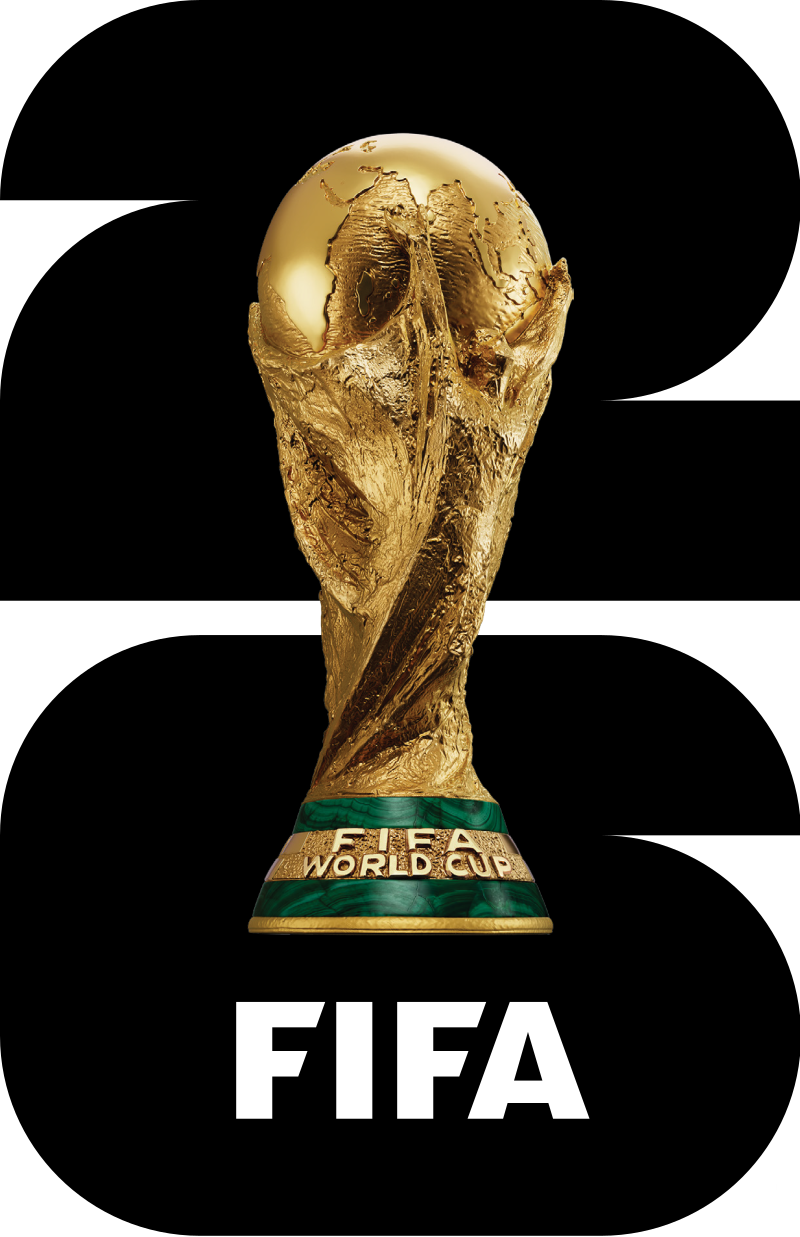 FIFA Fussball-Weltmeisterschaft 2026
FIFA Fussball-Weltmeisterschaft 2026
 Women's Soccer World Cup 2003
Women's Soccer World Cup 2003

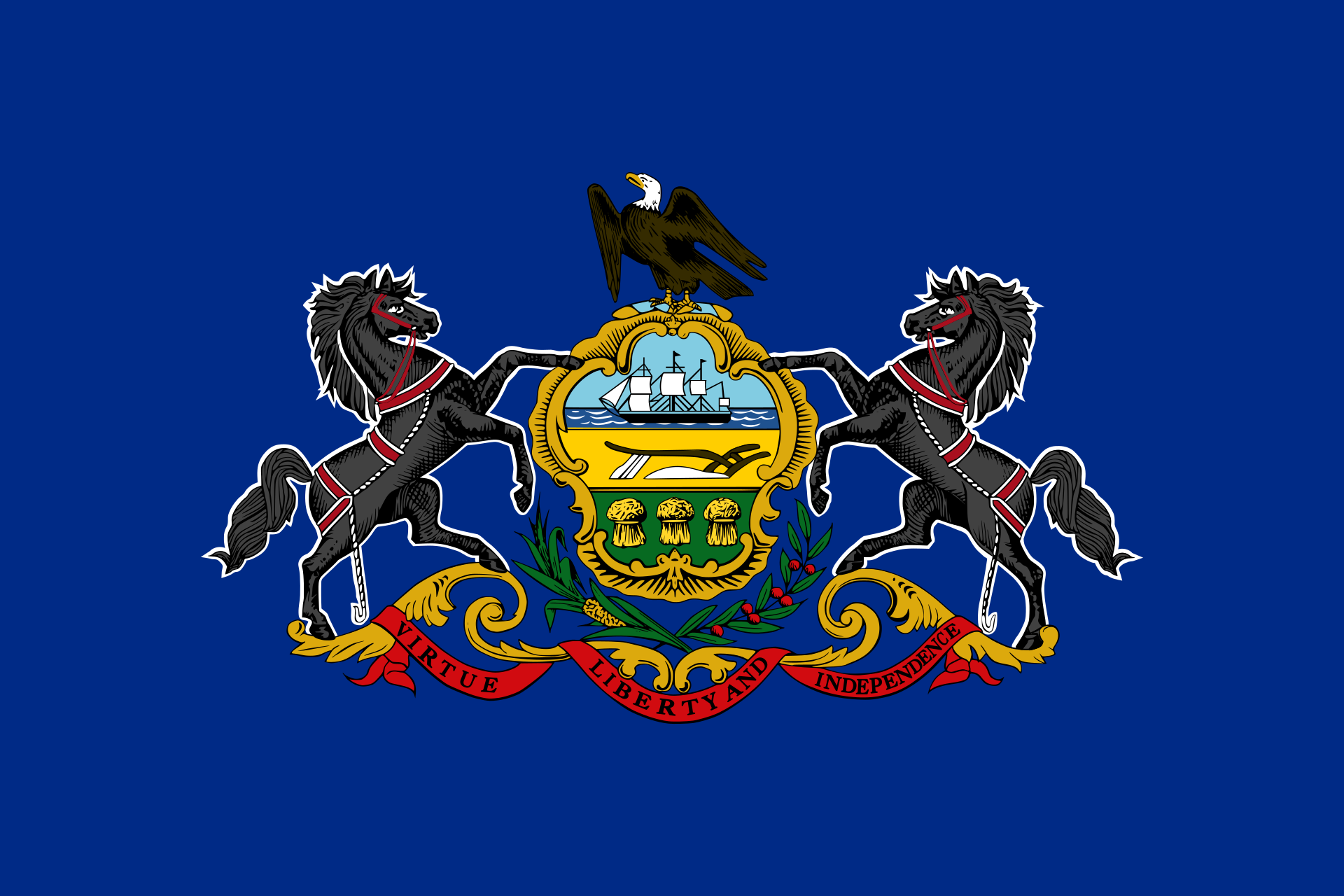 Pennsylvania-PA
Pennsylvania-PA
 United States
United States

 Important port
Important port

Philadelphia ist eine Stadt im US-Bundesstaat Pennsylvania. Mit rund 1,6 Millionen Einwohnern (Stand: 2016, Schätzung des U.S. Census Bureau) ist sie die sechstgrößte Stadt der Vereinigten Staaten[1] und die größte des Bundesstaates Pennsylvania. An der Ostküste ist Philadelphia nach New York City die zweitgrößte Stadt. Die Stadt liegt am Delaware River im Zentrum der Metropolregion Delaware Valley.
In der Geschichte der USA ist Philadelphia eine der bedeutendsten Städte. Nach New York und vor Washington war sie 1790 bis 1800 Nationalhauptstadt und damals die größte Stadt der USA sowie nach London die zweitgrößte englischsprachige Stadt der Welt. In Philadelphia tagte der erste und teilweise auch der zweite Kontinentalkongress sowie der Verfassungskonvent von 1787, die Amerikanische Unabhängigkeitserklärung wurde hier verkündet und die Verfassung beschlossen.
Philadelphia wird umgangssprachlich Philly oder City of Brotherly Love genannt, was von einer Übersetzung des griechischen Namens Philadelphia herrührt (φιλíα philía ‚Liebe‘ und ἀδελφός adelphós ‚Bruder‘ → φιλαδελφία philadelphía ‚Bruderliebe‘).
费城(英语:Philadelphia),即费利德菲亚,也常被简称为费利(或菲利,英语:Philly) ,中文又音译为非拉铁非和菲拉德尔斐亚,是美国宾夕法尼亚州人口最多、面积最大的都市,同时是美国第五大城。根据2010年人口普查数据,费城人口为1,526,006人。费城市中心的人口在全美国排名第五,仅次于纽约、洛杉矶、芝加哥和休斯顿。以现在美国官方的定义而言,费城都会区的面积大小排名全美第四,共约620万人居住其中,但若以其他定义来衡量,费城排名第六,次于旧金山湾区与华盛顿-巴尔的摩都会区。费城是德拉瓦河谷都会区的中心城市。
费利德菲亚即希腊文“友爱”的意思,是传教士命名的,费城是美国最老、最具历史意义的城市,它在美国史上有非常重要的地位。在18世纪时,费城是美国第二大城与人口最多的城市,在当时,它的政治与社会重要性超过纽约与波士顿。本杰明·富兰克林对费城的兴起贡献良多。从1854年起,费城市和费城县为两个并行的地方政府,而从1952年起,市与县共有一个政府组织,但费城县仍属宾州州政府下的一个独立的县。
自从1854年通过“合并法案”(Act of Consolidation)后,费城市的边界就与费城县相同。在此之前,费城市只在南街(South Street)、葡萄街(Vine Street)与德拉瓦河与斯库基尔河(Schuylkill River)之间的区域。费城后来扩张至周围的西费城(West Philadelphia)、北费城(North Philadelphia)与东北费城(Northeast Philadelphia),同时也包括了几个小型的聚落如罗布鲁(Roxborough)、马拉扬克(Manayunk)、艾利山(Mount Airy)与栗树丘(Chestnut)。费城同时是全美最大的大学城(college town)之一,拥有许多高等学府,其中包括常春藤盟校的宾夕法尼亚大学,国家第一所医学院和法学院兼缘于此校。有超过120,000名大学生就读市区的学院与大学,周遭的都会区也有接近300,000名的大学与学院学生。
フィラデルフィア(英語: Philadelphia)は、アメリカ合衆国ペンシルベニア州南東部にある都市。同州の最大都市かつ北米有数の世界都市である。市内の人口は156万7442人(2015年推計[1])で全米第5位。
名門のペンシルベニア大学や工学系に強いドレクセル大学、日本にもキャンパスを置く州立大学のテンプル大学を抱える学術都市である。市内に約12万人、都市圏全体で約30万人と、全米で最も多くの学生を持つ都市のひとつである。
漢字の当て字和名は費拉特費、また短縮して費府。
なお、フィラデルフィア都市圏の治安は概ね良好であるが、デラウェア川の対岸にあるニュージャージー州カムデンは、デトロイトやセントルイスなどと並んで、全米で最も危険な都市のひとつとされる。
独立記念館や自由の鐘があり、近郊にはバレーフォージがある合衆国建国ゆかりの地である。
Philadelphia, often called Philly, is the largest city in the U.S. state and Commonwealth of Pennsylvania, and the sixth-most populous U.S. city, with a 2017 census-estimated population of 1,580,863.[6] Since 1854, the city has been coterminous with Philadelphia County, the most populous county in Pennsylvania and the urban core of the eighth-largest U.S. metropolitan statistical area, with over 6 million residents as of 2017.[4] Philadelphia is also the economic and cultural anchor of the greater Delaware Valley, located along the lower Delaware and Schuylkill Rivers, within the Northeast megalopolis. The Delaware Valley's population of 7.2 million ranks it as the eighth-largest combined statistical area in the United States.[5]
William Penn, an English Quaker, founded the city in 1682 to serve as capital of the Pennsylvania Colony.[8] Philadelphia played an instrumental role in the American Revolution as a meeting place for the Founding Fathers of the United States, who signed the Declaration of Independence in 1776 at the Second Continental Congress, and the Constitution at the Philadelphia Convention of 1787. Several other key events occurred in Philadelphia during the Revolutionary War including the First Continental Congress, the preservation of the Liberty Bell, the Battle of Germantown, and the Siege of Fort Mifflin. Philadelphia was one of the nation's capitals during the revolution, and served as temporary U.S. capital while Washington, D.C., was under construction. In the 19th century, Philadelphia became a major industrial center and a railroad hub. The city grew from an influx of European immigrants, most of whom came from Ireland, Italy and Germany—the three largest reported ancestry groups in the city as of 2015.[9] In the early 20th century, Philadelphia became a prime destination for African Americans during the Great Migration after the Civil War,[10] as well as Puerto Ricans.[11] The city's population doubled from one million to two million people between 1890 and 1950.
The Philadelphia area's many universities and colleges make it a top study destination, as the city has evolved into an educational and economic hub.[12][13] According to the Bureau of Economic Analysis, the Philadelphia area had a gross domestic product of US$431 billion in 2016, the eighth-largest metropolitan economy in the United States.[14] Philadelphia is the center of economic activity in Pennsylvania and is home to five Fortune 1000 companies. The Philadelphia skyline is expanding, with a market of almost 81,900 commercial properties in 2016,[15] including several nationally prominent skyscrapers.[16] Philadelphia has more outdoor sculptures and murals than any other American city.[17][18] Fairmount Park, when combined with the adjacent Wissahickon Valley Park in the same watershed, is one of the largest contiguous urban park areas in the United States.[19] The city is known for its arts, culture, cuisine, and colonial history, attracting 42 million domestic tourists in 2016 who spent US$6.8 billion, generating an estimated $11 billion in total economic impact in the city and surrounding four counties of Pennsylvania.[20] Philadelphia has also emerged as a biotechnology hub.[21]
Philadelphia is the birthplace of the United States Marine Corps,[22][23] and is also the home of many U.S. firsts, including the first library (1731),[24] hospital (1751),[24] medical school (1765),[25] national capital (1774),[26] stock exchange (1790),[24] zoo (1874),[27] and business school (1881).[28] Philadelphia contains 67 National Historic Landmarks and the World Heritage Site of Independence Hall.[29] The city became a member of the Organization of World Heritage Cities in 2015,[30] as the first World Heritage City in the United States.[13] Although Philadelphia is rapidly undergoing gentrification, the city actively maintains mitigation strategies to minimize displacement of homeowners in gentrifying neighborhoods.[31]
Philadelphie (en anglais Philadelphia, prononcé [ˌfɪləˈdɛlfiə]), surnommée Philly, est une ville du Commonwealth de Pennsylvanie, située dans le Nord-Est des États-Unis, entre New York et Washington DC. Le nom de la ville, choisi par William Penn, signifie « amitié fraternelle2 » en grec, car elle devait être un îlot de tolérance religieuse.
Cinquième ville du pays selon le recensement fédéral de 2010 (après New York, Los Angeles, Chicago et Houston) et sixième agglomération3, Philadelphie compte 1 526 006 habitants dans la municipalité (Philadelphia City) et 5 965 343 habitants dans son aire métropolitaine (PMSA de Philadelphie–Camden–Wilmington)4.
Centre historique, culturel et artistique majeur aux États-Unis, Philadelphie est également un grand port industriel sur le fleuve Delaware qui se jette dans l’océan Atlantique. Fondée en 1682, elle fut jusqu'à 1790 la ville la plus peuplée d'Amérique du Nord. Entre 1774 et 1800, le Congrès des États-Unis s'est réuni en plusieurs endroits, le plus souvent à Philadelphie, faisant de celle-ci la capitale temporaire du pays, jusqu'à ce que Washington devienne la capitale définitive. Par ailleurs, Philadelphie entretient pendant quelques décennies une rivalité financière et politique avec New York, avant d'être éclipsée par sa rivale.
À présent, Philadelphie est la principale métropole de l'État de Pennsylvanie, dont la capitale est Harrisburg, et le siège du comté de Philadelphie.
Filadelfia[1][2] (in inglese: Philadelphia, informalmente anche Philly[3]) è la sesta città per popolazione degli Stati Uniti d'America e la più importante dello stato della Pennsylvania. Nel 2014 contava 1 560 297 abitanti; mentre la sua area metropolitana, estesa anche su parti dei vicini stati del Delaware e del New Jersey, raggiungeva i 5,8 milioni di abitanti.
Fondata nel 1682 dal quacchero William Penn, Filadelfia è una delle più antiche città degli Stati Uniti d'America, e fra la fine del XVIII secolo e l'inizio del XIX fu la città più grande del Paese. In quell'epoca vi furono redatte la dichiarazione di Indipendenza (1776) e la costituzione statunitense.
Filadelfia sorge sulla riva occidentale del fiume Delaware, ed è attraversata da un suo affluente, lo Schuylkill; il centro storico della città è compreso fra questi due fiumi.
Filadelfia3 (en inglés, Philadelphia, también apodada coloquialmente Philly) es la mayor ciudad del estado de Pensilvania, Estados Unidos. Está ubicada sobre la orilla derecha del río Delaware —poco antes de su desembocadura en la bahía de Delaware—, que la separa del estado de Nueva Jersey, y en un punto intermedio entre las importantes ciudades de Nueva York y Washington D. C. Es la quinta ciudad del país por población y la 51.ª del mundo. El condado de Filadelfia, del que es sede, tiene 1 526 000 habs. (Philadelphia City) y su área metropolitana (Valle de Delaware) alcanza los 6 millones de habs. (censo de 2014).
Es un gran centro histórico, cultural y artístico en los Estados Unidos, y de la misma forma un importante puerto industrial sobre el río Delaware, que se extiende hasta el océano Atlántico. Fundada en 1682, fue durante el siglo XVIII la ciudad más poblada de las Trece Colonias y la tercera ciudad más poblada del Imperio británico (tras Londres y Dublín), antes de convertirse provisionalmente en la ciudad capital de los Estados Unidos. Fue velozmente superada por Nueva York y le cedió su estatus de capital a la flamante ciudad de Washington D.C. Hoy, Filadelfia es la principal metrópolis del estado de Pensilvania, aunque la capital y sede del gobierno es Harrisburg.
El nombre de la ciudad, elegido por William Penn, significa "la ciudad del amor fraternal" (compuesta de philos (φίλος) "amor", y adelphos (ἀδελφός) "hermano"), pues se deseaba que fuese un refugio de tolerancia religiosa.
Establecida en 1682, es una de las ciudades más antiguas del país, y, como capital original y ciudad más grande de la época colonial, gozaba de una importancia política y social mayor que Boston o Nueva York. En 1776, el Congreso Continental de las Trece Colonias se reunió en Filadelfia y en el 4 de julio de ese año, declaró la independencia de Gran Bretaña. Quizás el ciudadano más famoso de Filadelfia fue Benjamin Franklin, escritor, científico y político.
Filadelfia es fundamental para la historia afroamericana, su gran población negra es anterior a la Gran Migración.
Филаде́льфия (англ. Philadelphia [ˌfɪləˈdɛlfiə], общеупотр. сокр. «Фи́л(л)и», англ. Philly [ˈfɪli])[1][2] — один из старейших городов США, пятый по величине населения город страны и самый населённый город штата Пенсильвания, с населением 1 526 006 жителей (согласно переписи 2010 года). Население агломерации вместе с пригородами составляет 6 034 678 жителей. Расположен на реке Делавэр у побережья Атлантического океана[3].
Филадельфия богата историей и культурой. В исторической части города до сих пор царит атмосфера маленького и тихого городка, каким была и Филадельфия, и другие колониальные города во время образования государства Соединённые Штаты Америки.
Основан в 1682 году Уильямом Пенном. Имеет прозвище «Город братской любви» (Φιλαδέλφεια на греческом языке означает 'братолюбие'), это связано с тем, что город основан переселенцами, принадлежавшими к протестантской общине квакеров (в США и сейчас его неофициально называют Квакертаун - 'город квакеров'). В 1776 году в Филадельфии Второй континентальный конгресс тринадцати североамериканских штатов принял Декларацию независимости. В 1776, 1777, 1778—1783 и 1790—1800 Филадельфия была временной столицей США.
Одним из известных жителей города был Бенджамин Франклин.
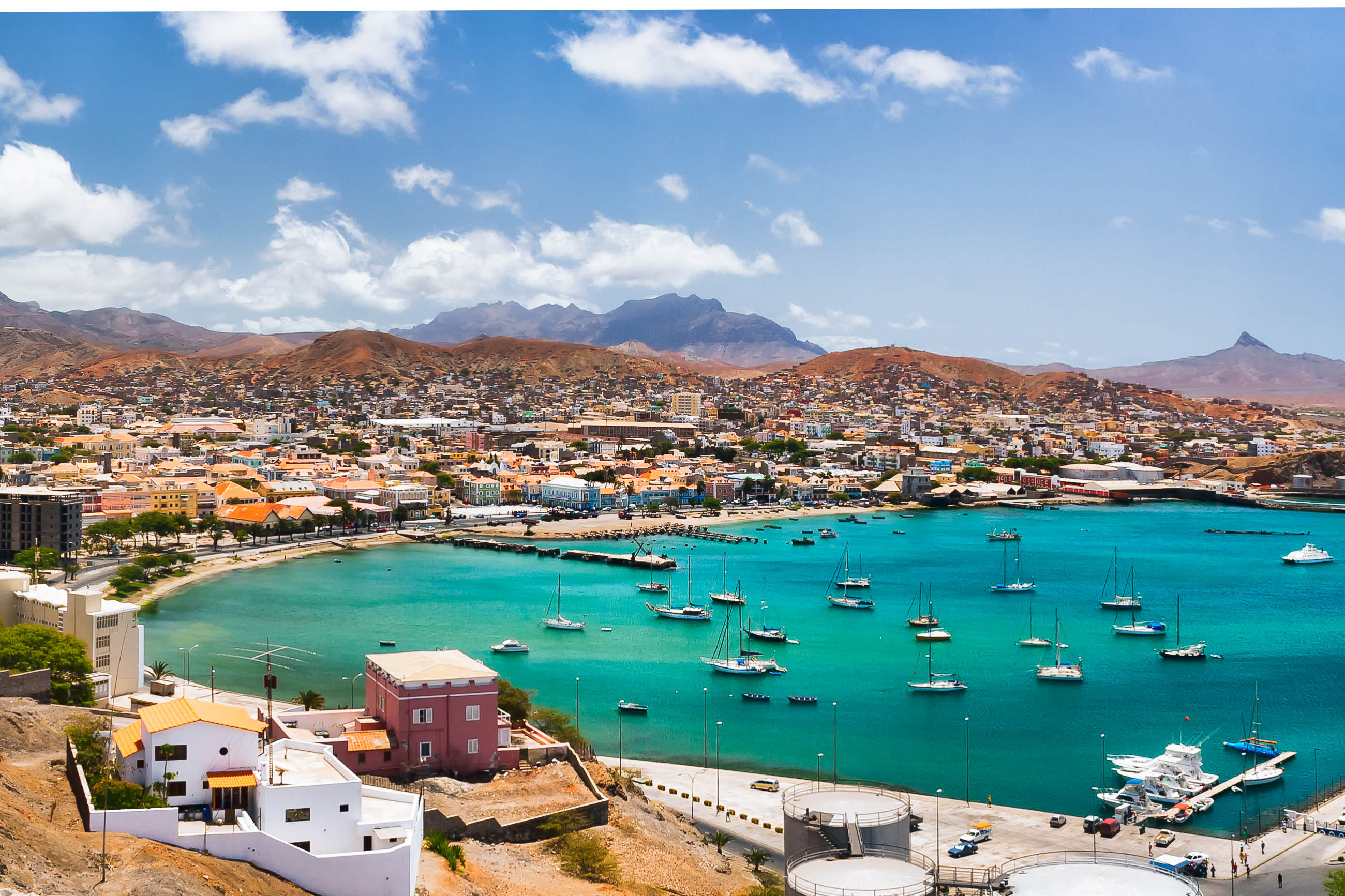
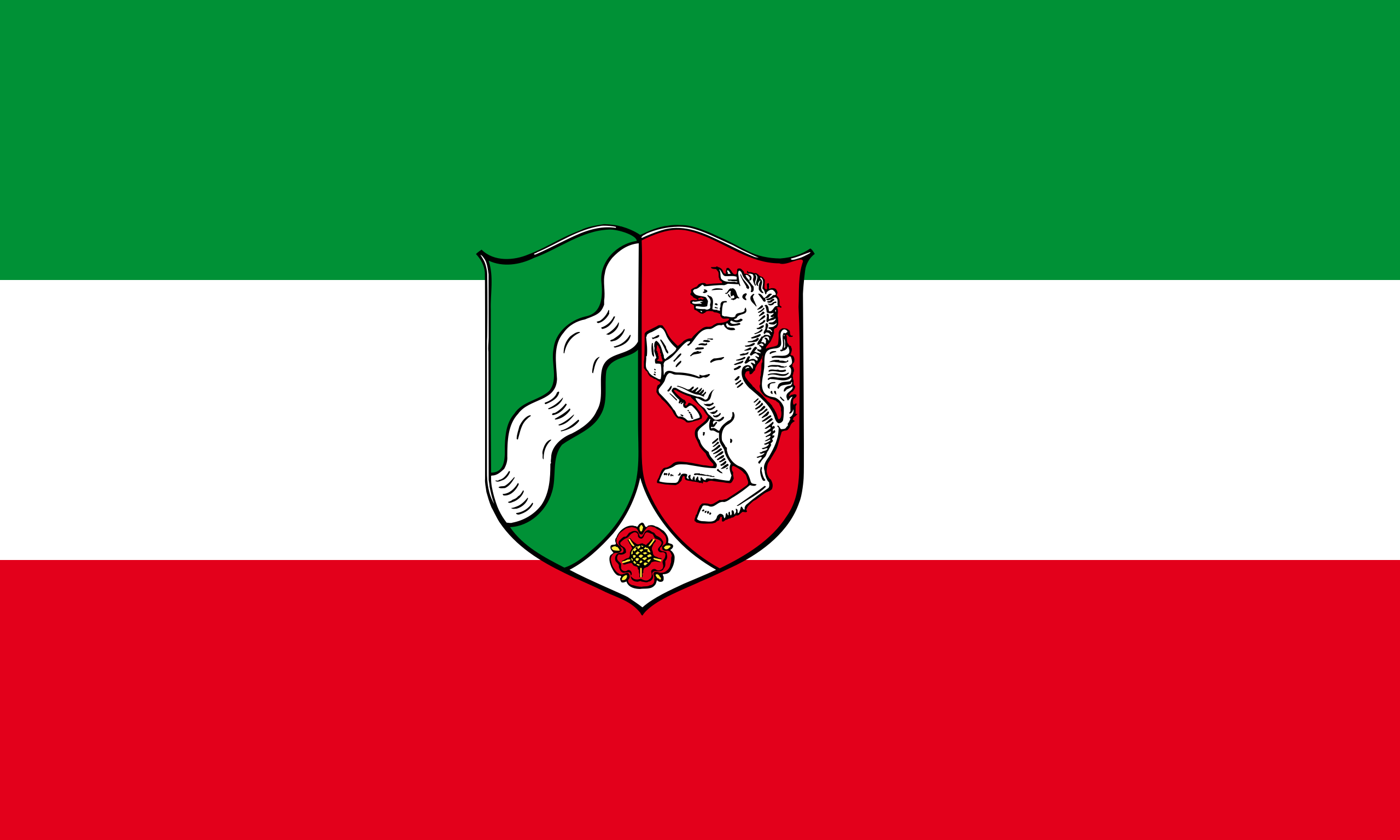 North Rhine-Westphalia
North Rhine-Westphalia
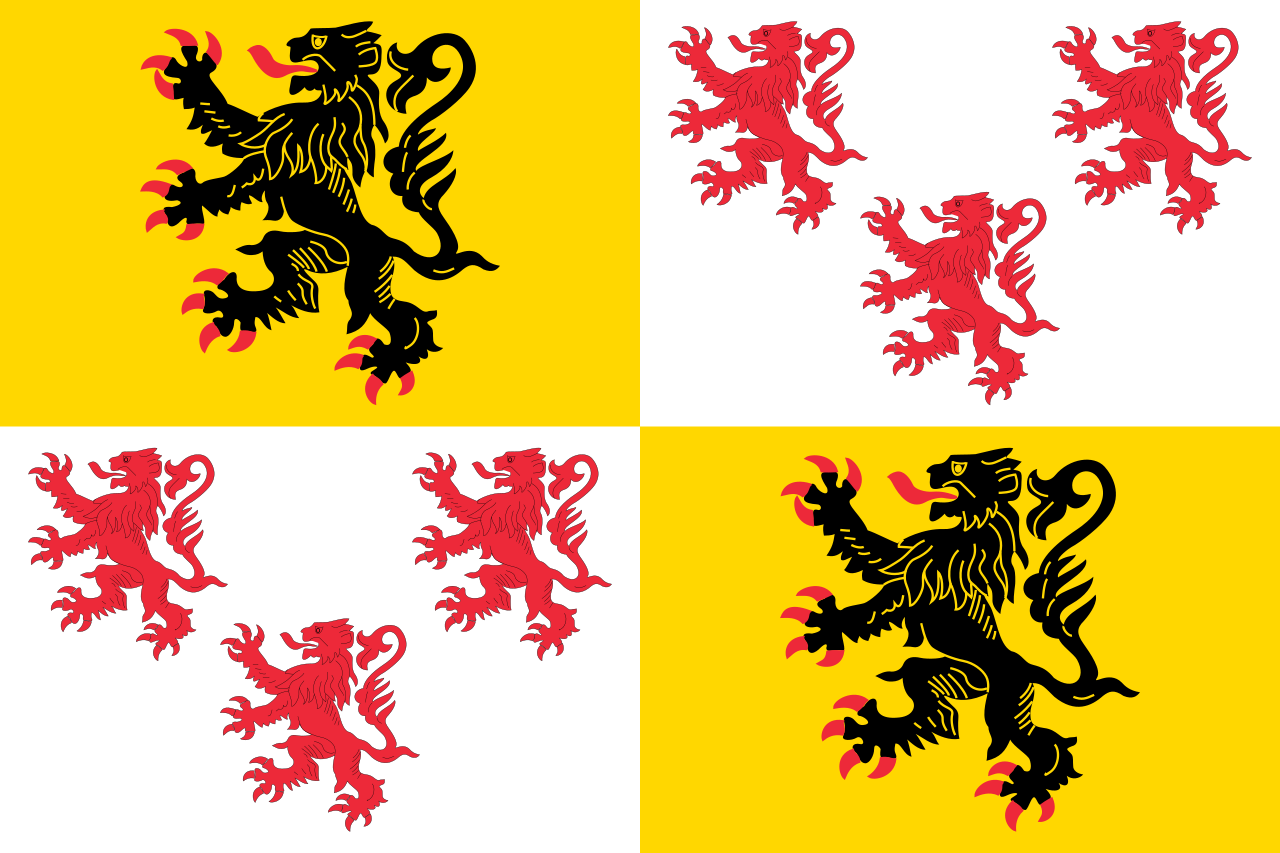 Hauts-de-France
Hauts-de-France
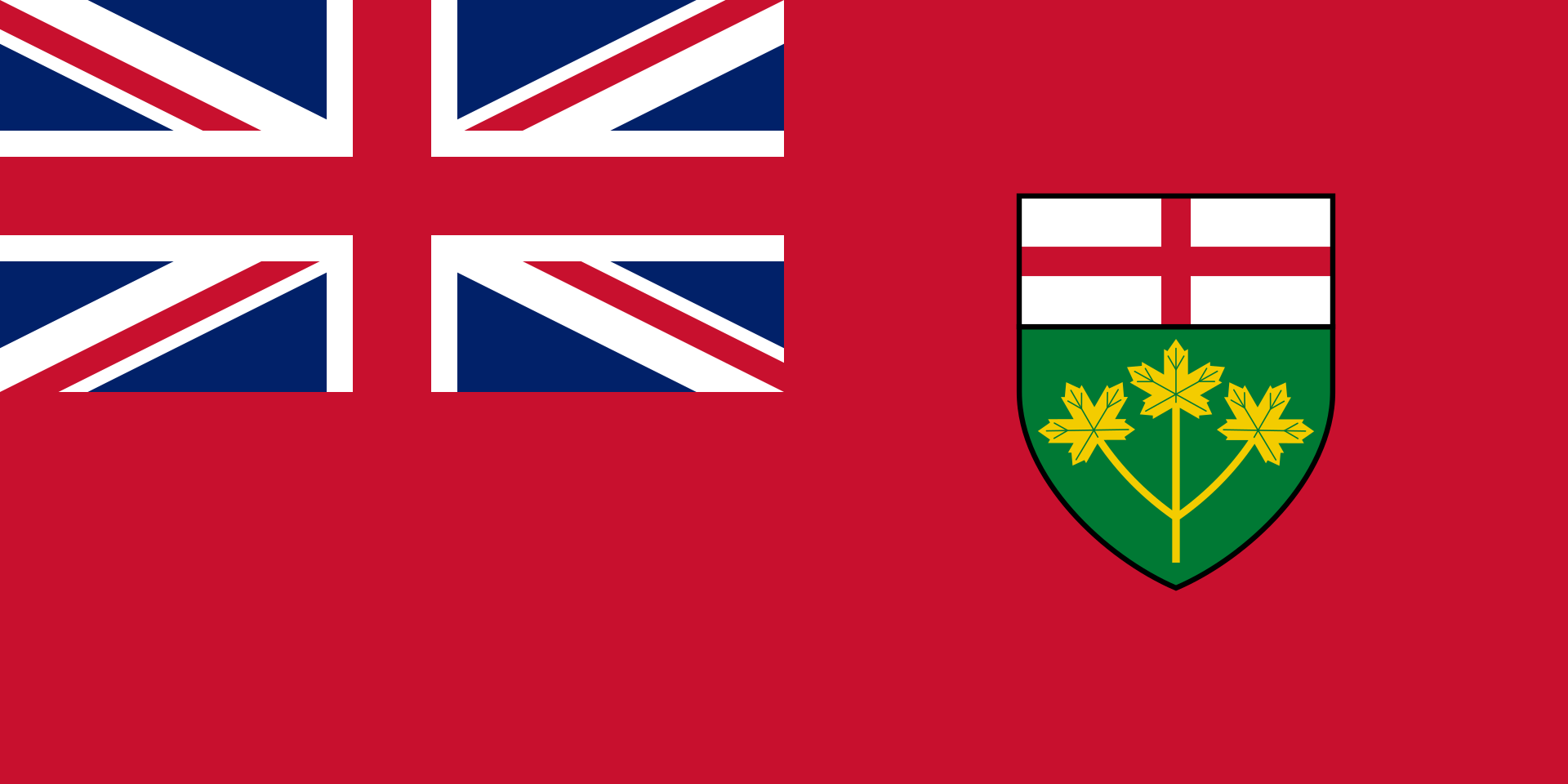 Ontario-ON
Ontario-ON
 Geography
Geography
 Sport
Sport